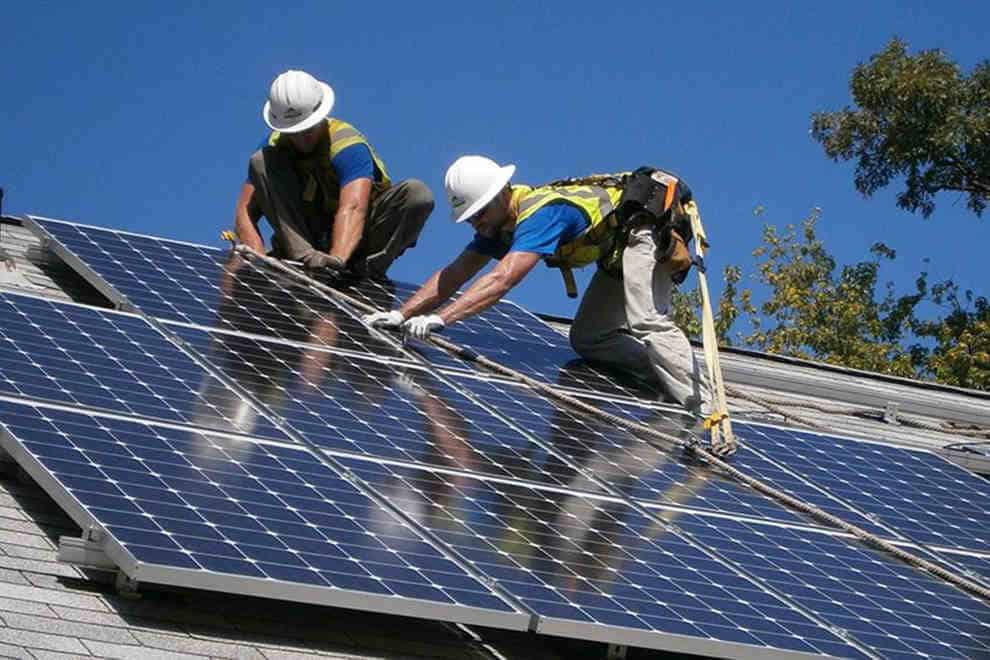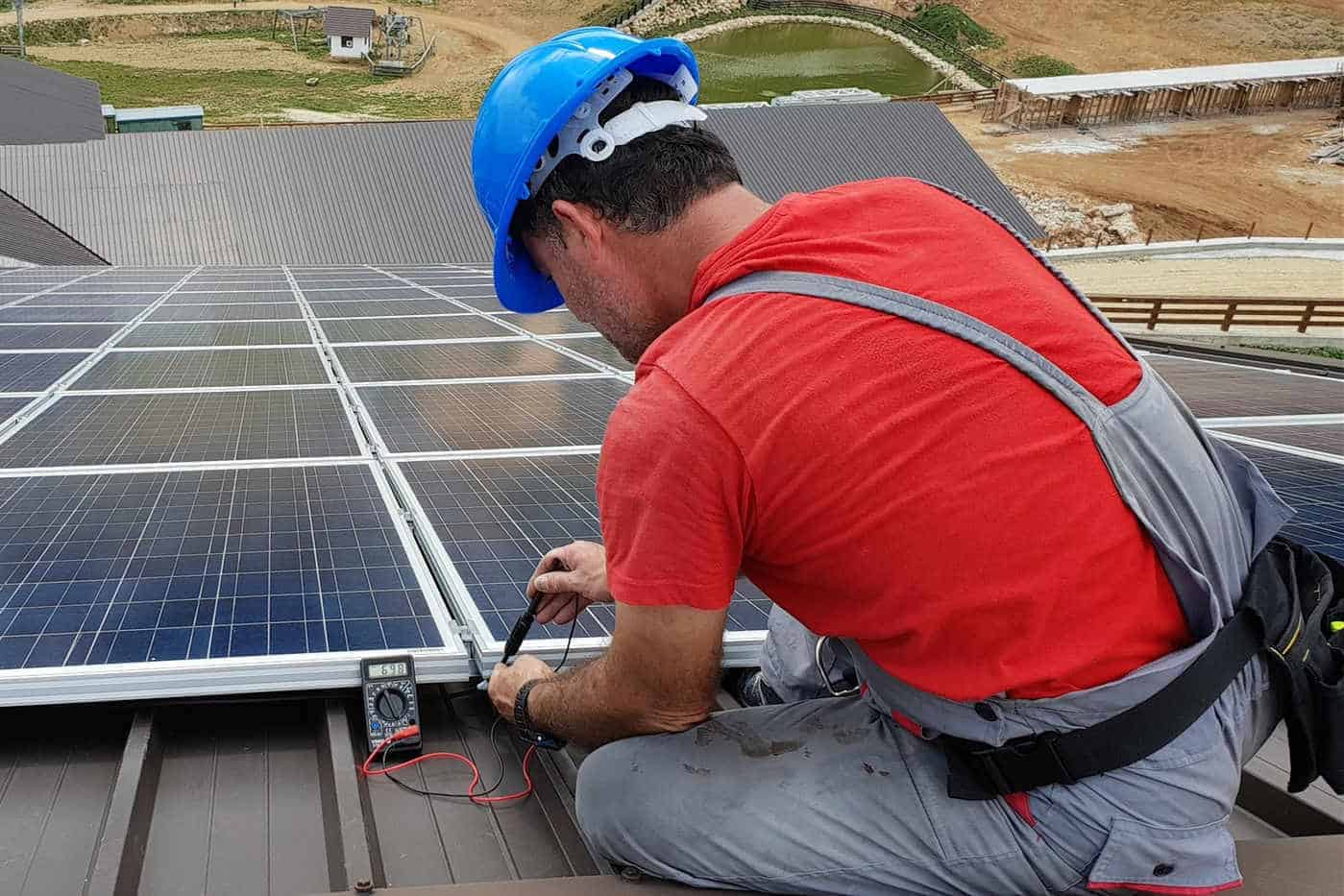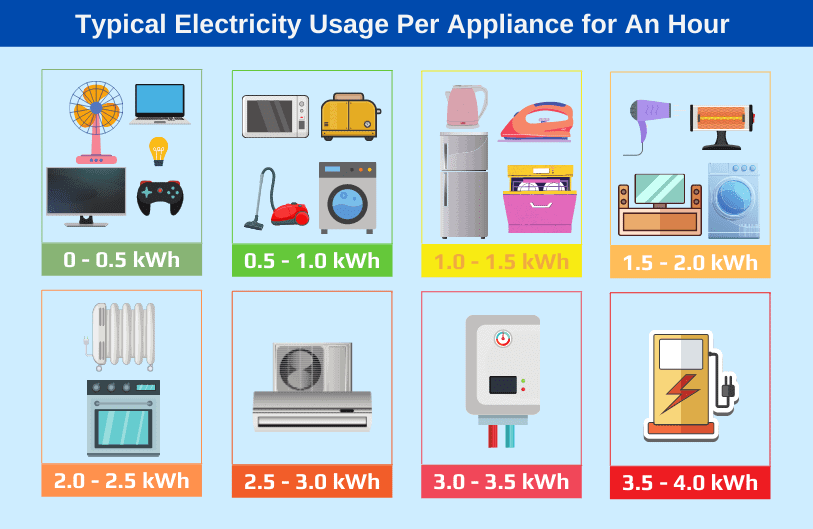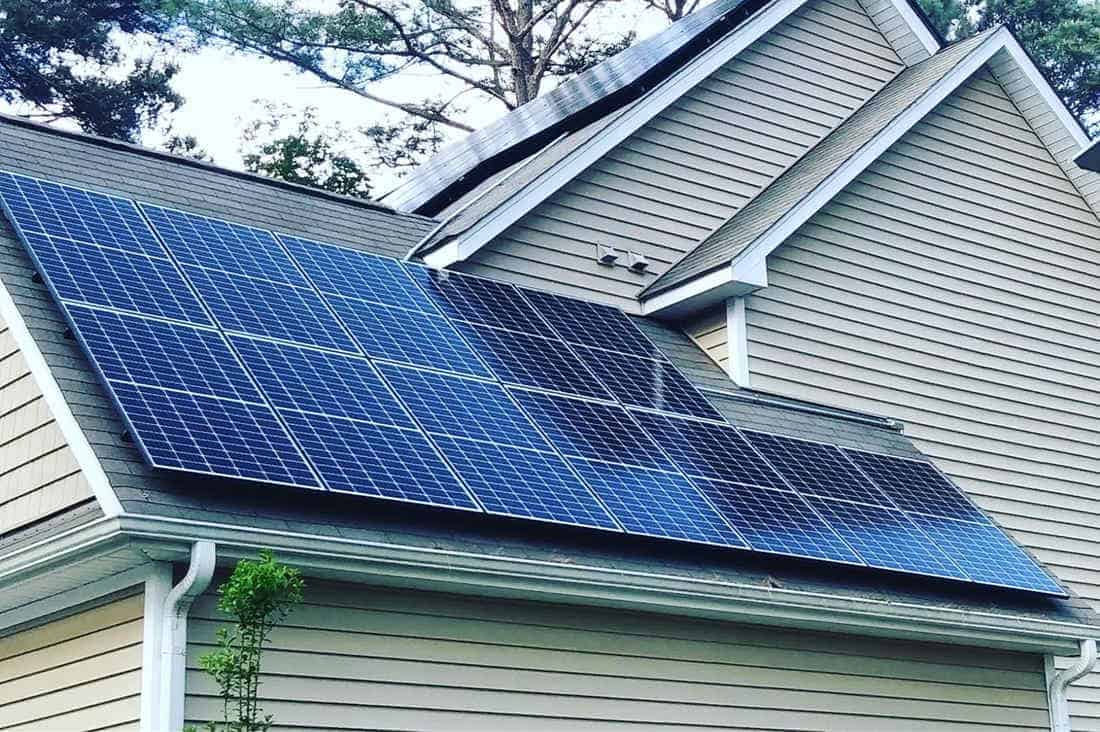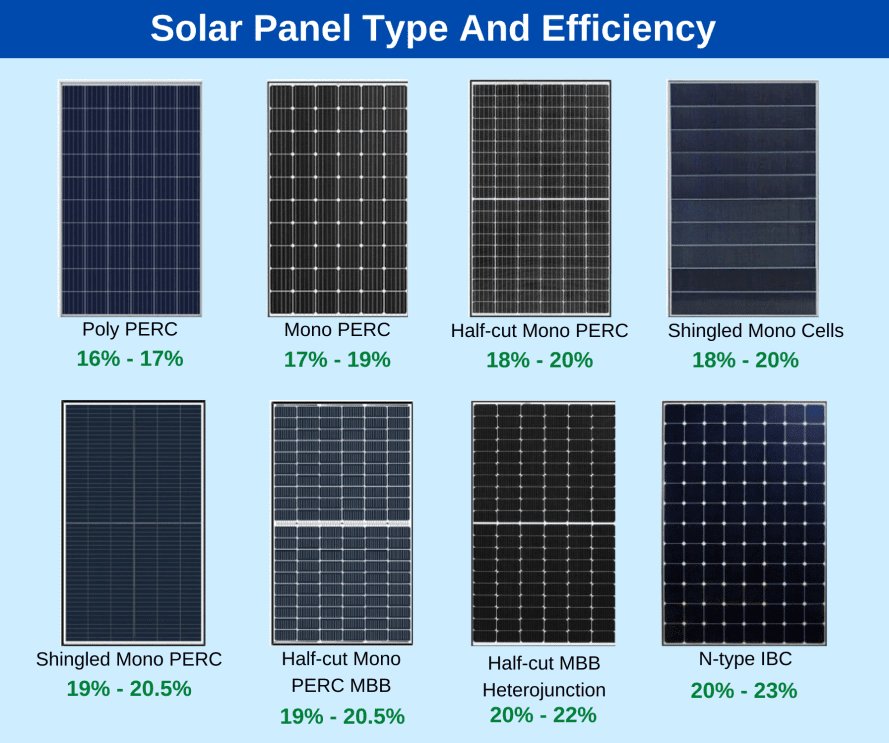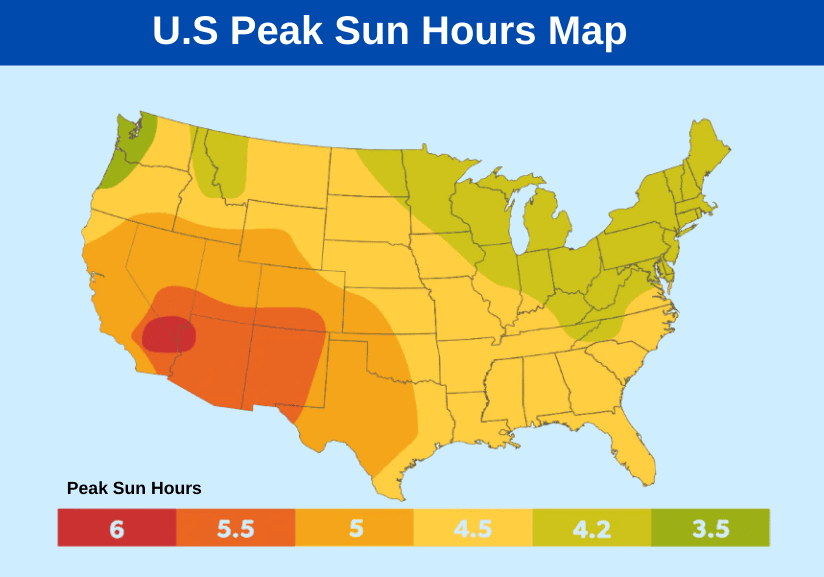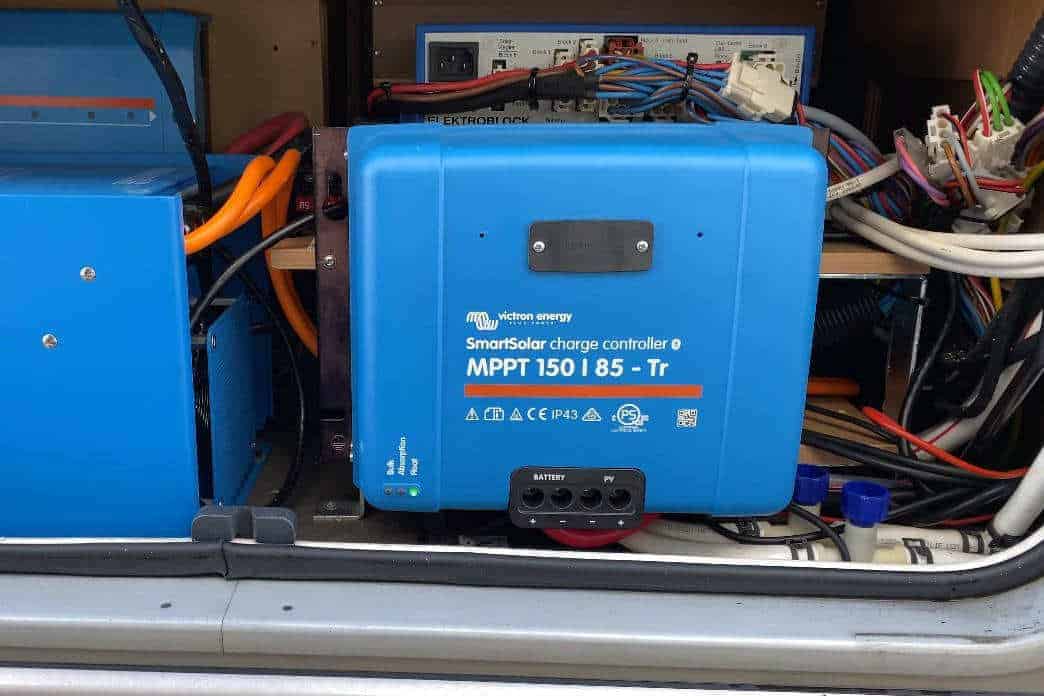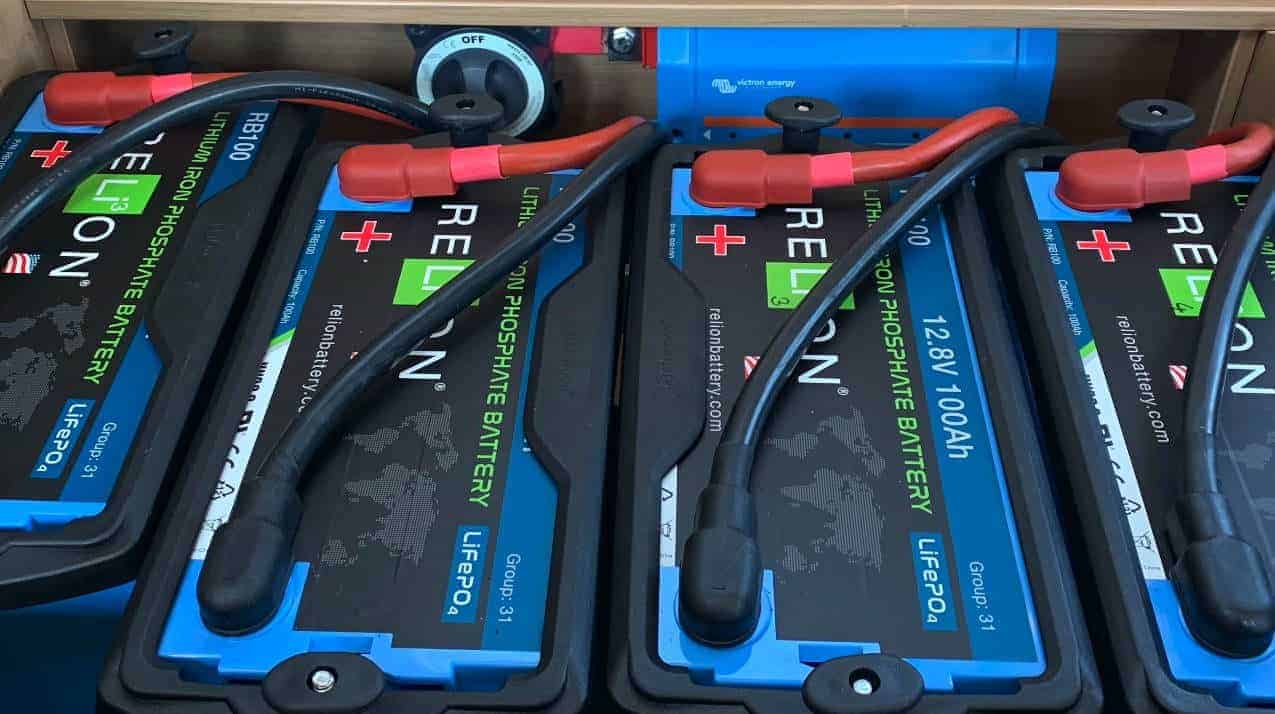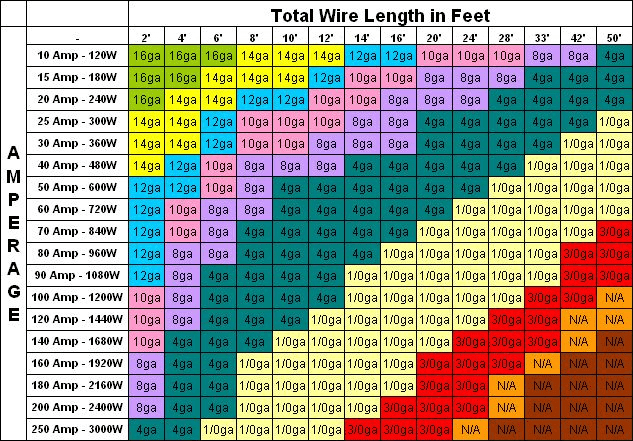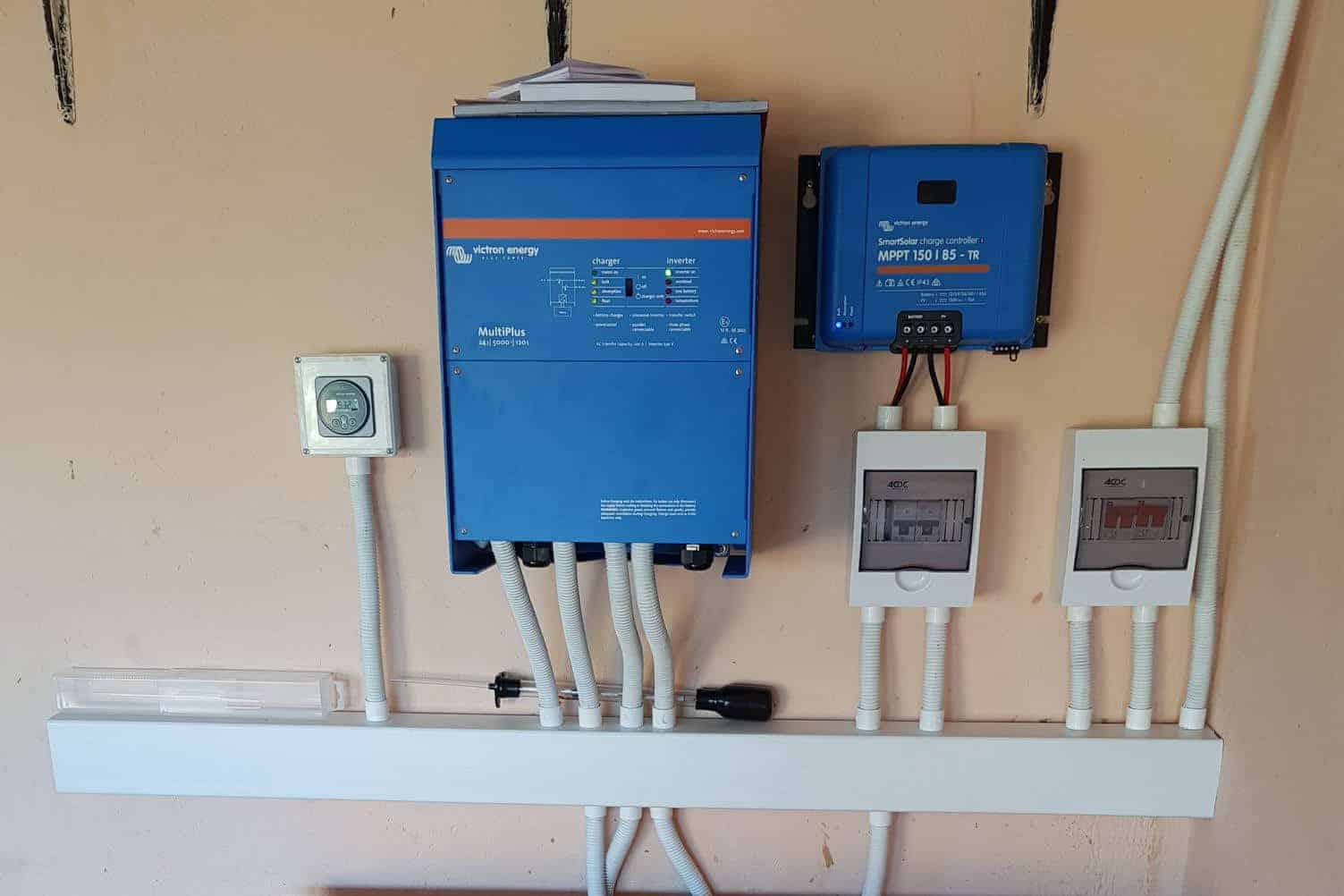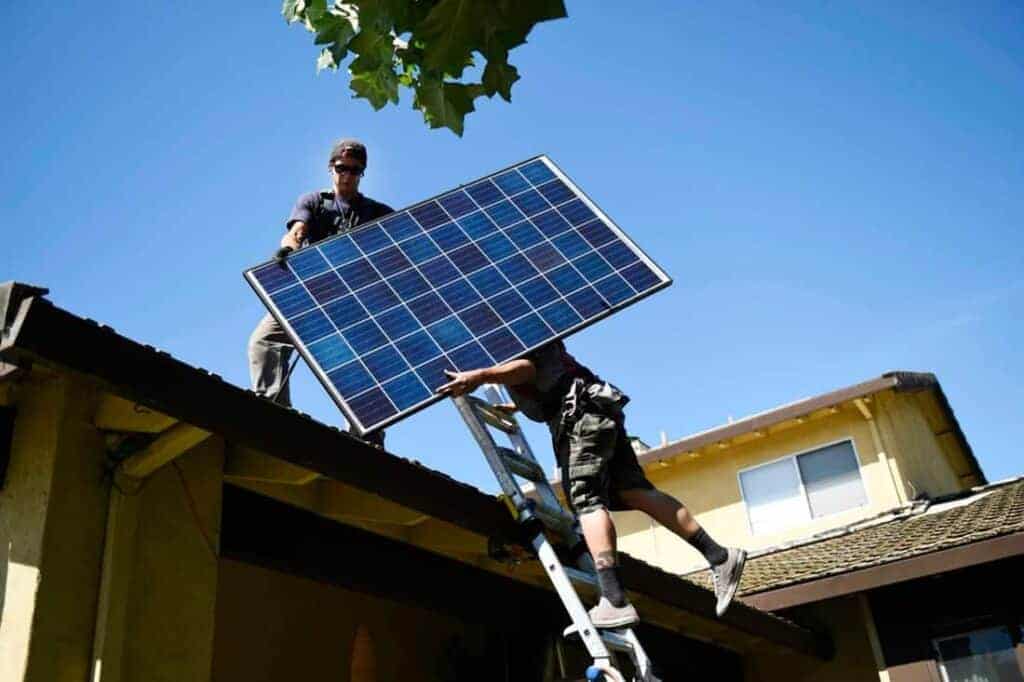Have you ever imagined what your life would look like without high electric bills? Or how good it feels to know you’re doing your part to save the planet? What if I told you you could do both by adopting an off-grid solar system?
An off-grid solar system is an installation completely independent of the electricity grid. It generates and stores all its electricity on-site from solar panels. You need not worry about electric bills or power interruptions with an off-grid solar system.
In this article, you’ll learn how to build an off-grid solar system. We’ll also outline the components you need and how to choose suitable options for your system. But before you pick up your shopping cart, you should determine your energy needs.
Load Assessment: Knowing Your Energy Needs
Off-grid solar systems are sized based on your energy demands. The solar system you choose should be enough to sustain all your electrical appliances. Remember, an off-grid plan is entirely dependent on solar energy.
Load assessment is crucial. If you skip this step, you may end up with an underperforming system that cannot meet your energy needs. Many complain about failing systems but do not consider whether they got the right solar system for their energy need.
Factors Influencing Your Energy Needs
Three key factors determine your energy needs. Let’s examine each aspect, discussing how they influence your energy needs.
Number of Electrical Appliances
Electrical appliances need electricity to function. In this way, they consume electric power. Examples of household electrical appliances include television sets, computers, A/C units, and refrigerators.
The more electrical appliances you have, the higher your energy needs.
Watt Rating of Each Appliance
A watt rating describes how much power (in watts) a particular appliance needs to run or function. You can find the watt rating on the nameplate of any electrical device.
Manufacturers can quote it directly as 1,200W or indirectly in volts (V) and amperes (A). In the case of indirect quotes, you can calculate watt ratings by multiplying the voltage rating by the ampere rating.
For example, a computer monitor’s nameplate states “14 V” and “1.78 A.” We calculate the watt rating of the appliance by multiplying 14 by 1.78 to get a wattage of 24.92W.
Different appliances have different watt ratings. For example, an iron box can have a rating of 1,200 W, and a computer monitor has a rating of 24.92 W.
Hours of Usage
How long you use each appliance will impact your energy needs. We calculate power consumption by multiplying the watt rating by the hours of usage. For example, You use a 25 W computer monitor for 8 hours daily. Your daily electricity consumption for this appliance is 200 Wh.
Calculating Your Energy Needs
To calculate your energy needs, follow the steps below:
- List all your electrical appliances
- If you have multiple appliances of the same kind, specify the quantity
- Jot down the watt rating of each appliance
- State the hours of usage of each appliance
- Calculate the power consumption of each appliance
- Add the total energy consumption of all your appliances
For example, a home in Texas has 12 lamps, a TV set, a computer, a refrigerator, and an iron box. To calculate the household’s daily energy needs, consider the table below:
| Appliance | Quantity | Watt Rating (W) | Daily Usage (Hours) | Consumption (Wh) |
| DC Lamps | 12 | 5 W each | 6 hours | 360 Wh |
| TV Set | 1 | 150 W | 6 hours | 900 Wh |
| Computer | 1 | 150 W | 4 hours | 600 Wh |
| Refrigerator | 1 | 80 W | 16 hours | 1,280 Wh |
| Iron Box | 1 | 2,200 W | ½ hours | 1,100 Wh |
| Total Energy Needed for a Single Day | 4,240 Wh | |||
This Texan household requires 4,240 Watt-hours a day of solar energy to run all its electrical appliances. [Check our article: How Many Solar Panels Do I Need To Power My Home]
Note: Keep the example above in mind. We’ll be using it to explain other concepts.
Choosing the Right Components
For a functional off-grid solar system, you need certain components, including:
- Solar Panels
- Charge Controllers
- Batteries
- DC-AC Inverters
- Wiring Cables
- Mounting Racks
Let’s look at each component and how to choose the best options for your off-grid solar system.
Solar Panels
Solar panels go by many names, including solar electric, solar cell, and photovoltaic (PV) panels. Solar panels convert solar energy to electric charge. This newly generated electric charge is in the form of a Direct Current, or DC for short.
When choosing solar panels, you must determine the number of panels you need to meet your daily energy requirements.
To calculate the size of your solar panel array, follow the steps below:
- Determine your daily energy needs
- Determine the number of sunlight hours your property enjoys in a day
- Divide your daily energy needs by the number of sunlight hours
- Determine the best solar panel configuration that caters to your power demands
Let’s determine how many panels our Texan household needs to power its home. The home requires 4,240 Watt-hours of solar energy daily to power its electrical appliances.
Assuming the property only gets six hours of sunlight exposure, we can calculate the size of its solar array as shown below.
4,240 Wh ÷ 6 h = 706.67 W
This Texan household needs two 360 W solar panels to meet its daily energy requirements.
Two 360 W solar panels contribute 720 W in total. The extra 14 W from the solar panel configuration makes up for the inefficiencies that come with solar panels.
For average sunlight hours by state, check out this article.
Charge Controllers
From the solar panel, electric charge flows to a charge controller. The charge controller determines how much current it should direct into the batteries. Without them, your batteries would have short lives as they would suffer from overcharging.
The charge controller is an intermediary between your solar panel and your battery. When buying a charge controller, choose one that matches your solar panel and battery’s voltage rating.
Also, check the current capacity of the device. Ensure you get a charge controller with a higher current rating than your solar panels.
For example, a 20 A charge controller is appropriate for 11 A solar panels. Strong solar panels can overpower or overcharge a weaker charge controller.
Batteries
From the controller, electric charge (still in DC form) flows to the batteries. A battery stores electricity for night use when there’s no sunlight. Many companies now sell batteries with specified Ah or kWh ratings.
For example, the Texan home requires 4,240 Wh of electric energy daily to power its electrical appliances. To convert Wh to kWh, we divide it by 1,000.
4,240 Wh ÷ 1,000 = 4.24 kWh
When choosing a battery, you must pick one that exceeds your daily energy requirements. From the example above, a 5 kWh batter would be an appropriate choice.
DC-AC Inverter
Up to this point, the electric charge is still in DC format and unsuitable for consumption. Modern electrical appliances operate on alternating current (AC). An inverter converts the DC charge from the panel to a consumable AC.
When choosing an inverter, consider your solar panels’ total power (in Watts) ratings. Select an inverter with a higher power rating.
For example, our Texan household opted for two 360 W solar panels. The total power rating of these panels is 720 W. Such a home needs a 1,000 W inverter.
You should also check your inverter’s PV input. Ensure it matches the voltage rating on your solar panel. Also, ensure that the battery input matches your battery’s voltage rating.
Wiring
Electric current flows through wires. And you need a set of wires to connect all your solar components. For small solar systems, cable size is not a big issue; a 4mm cable will do the trick.
For larger systems, cable size can impede performance and compromise safety. You can find cable size guides to help you find the appropriate wiring solution for your off-grid solar system.
Mounting Racks
Your solar panels must be secured so they don’t slip off your roof. Mounting racks perform this essential function. They also hold your solar panels at optimal angles, especially when installing them on the ground or a flat roof. [9 Steps To Mount Solar Panels On Roof]
Other Components
In addition to the above solar components, there are other essential items that complete your solar system. These items include:
- Fuses and breakers
- Cable ties
- Terminal lugs
- Metering devices, although optional
- Connectors, Although modern solar equipment comes with connectors built-in
Installing an Off-Grid Solar System
With all the components assembled, all that’s left is installation. Modern solar systems are relatively easy to install. They come with simple ports and connectors, plus easy-to-follow installation instructions.
Some of the tools that you’ll need for installation include:
- Crimping tool
- Pliers
- Screwdrivers
- Wire strippers
- Wrenches
Below is a helpful video to help you understand how to install an off-grid solar system.
Final Thoughts
An off-grid solar system is the only way to eliminate high electric bills while saving the planet. But many people see the wires and tools and feel intimidated.
Building an off-grid solar system isn’t as challenging as many make it out to be. If you’re starting with a simple setup, you can build it yourself. All you need is the right components and tools.
You can design and build an off-grid solar system with the information in this article. Embrace sustainable energy and help save the planet; build an off-grid solar system today.

